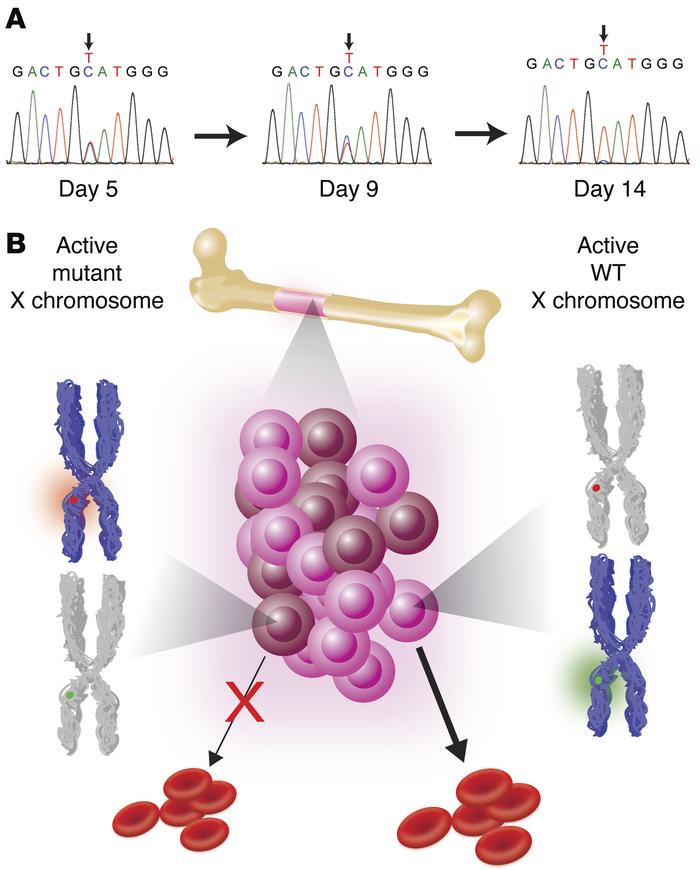Citation Information: J Clin Invest. 2015;125(4):1665-1669. https://doi.org/10.1172/JCI78619.
Abstract
Macrocytic anemia with abnormal erythropoiesis is a common feature of megaloblastic anemias, congenital dyserythropoietic anemias, and myelodysplastic syndromes. Here, we characterized a family with multiple female individuals who have macrocytic anemia. The proband was noted to have dyserythropoiesis and iron overload. After an extensive diagnostic evaluation that did not provide insight into the cause of the disease, whole-exome sequencing of multiple family members revealed the presence of a mutation in the X chromosomal gene
Authors
Vijay G. Sankaran, Jacob C. Ulirsch, Vassili Tchaikovskii, Leif S. Ludwig, Aoi Wakabayashi, Senkottuvelan Kadirvel, R. Coleman Lindsley, Rafael Bejar, Jiahai Shi, Scott B. Lovitch, David F. Bishop, David P. Steensma
Figure 3
X-linked dominant LOF



Copyright © 2025 American Society for Clinical Investigation
ISSN: 0021-9738 (print), 1558-8238 (online)

